|
The Fifties Revisited
I cannot claim that the 1950s was a favourite among my many decades but there is no doubt it is increasingly popular with crime writers; John Lawton, Andrew Taylor and Aly Monroe among others mining the period intelligently and successfully in recent years (and now James Runcie - see below).
The much-anticipated new novel from Elizabeth Wilson, The Girl In Berlin, published by Serpent’s Tale, deals with the political paranoia of that Cold War era and the fall-out from the defection of the Cambridge spies – or at least two of them – Burgess and Maclean.

I rated highly Elizabeth Wilson’s atmospheric 2009 thriller War Damage, which was oddly overlooked in that year’s crime writing awards and The Girl in Berlin, which opens in 1951, doesn’t disappoint. The book offers up some brilliantly-drawn characters including a pathetic and disillusioned Communist Party member, the sympathetic Special Branch detective Jack McGovern, an arrogant MI5 officer, a philandering BBC producer and his wife, who just happens to work at the Courtauld Institute for the ever-so-nice Dr Anthony Blunt and, of course, the mysterious ‘Girl in Berlin’ and her dominating father who is far from the only character with a past worth concealing. In fact they all have.
For this is a thriller about concealment and the betrayal; of political beliefs, personal relations and morals in general. It is multi-layered, subtle and finely crafted. Although it involves spies, ex-Nazis and a divided Berlin which resembles Dodge City at its most lawless, do not expect gunfights and car chases. It’s not that type of thriller. It’s clever.
Elizabeth Wilson is a veteran commentator on feminism and popular culture as well as being Visiting Professor at the London College of Fashion. I have never met her, but should I ever do, I will take her to task most severely for having written so few thrillers.
The vivacious Jessica Mann has written many a good thriller (one of my favourites being Funeral Sites – her feminist updating of The 39 Steps) and is the respected crime fiction critic for the Literary Review, but her new book is not a crime novel, rather a polemic and part-memoir.

The Fifties Mystique, splendidly published by Quartet Books, attempts (I think – but what do I know?) to explain pre-feminism to the post-feminist generation of women who have little or no appreciation of the situation of women in ‘the long 1950s’ which can be said to have extended from 1945 (end of WWII) to 1961 (introduction of the contraceptive pill).
Whilst Jessica goes out of her way to insist this is not an autobiography, the personal memoir elements of the book are the most intriguing and she never plays down the educational advantages she had, nor her flouting, deliberately or accidentally, of the social conventions of the day. All in all, this is a thoughtful, fascinating little book which ought to be on the reading lists of any university offering courses not just in ‘Women’s Studies’ but also in sociology, history and what I would like to call simply ‘humanity’. In fact, it should be on everyone’s reading list.
Personally, I have to say that my interests lie more in the 450s than the 1950s, as wonderfully elucidated in one of my favourite books, Christianity in Roman Britain to AD500 by the distinguished archaeologist Professor Charles Thomas.

This will not come as a surprise to anyone who knows of my long interest in sub-Roman Britain – which, God knows, I’ve told enough people about – and Professor Thomas’ book is to be highly recommended. The fact that he is the husband of my good friend Jessica Mann is neither here nor there.
Italian Job
I hear from my spies in Italy that the talented Michael(s) Gregorio, a writing duo famed for historical mysteries, has come bang up to date with a contemporary thriller Boschi & Bossoli.

At the moment the book is only available in Italian and, although modern languages are not my strong point, I believe there could be a tiny problem in finding an appropriate English translation of the title. I must ask a cunning linguist – perhaps the accomplished polyglot Professor Barry Forshaw – for advice on the matter.
Overkilling?
If twenty hours of the original Danish first series, followed by thirteen or so hours of the American remake were simply not enough, British thriller writer David Hewson has now written the 611-page novel version of The Killing for Macmillan, the proof of which weighs in at a chunky one-and-a-half pounds.
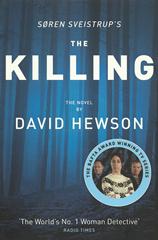
Publication is, I believe, cleverly timed to coincide with the climax of the latest Viking invasion, The Bridge, which is enthralling millions of BBC4 viewers in the Home Counties every Saturday evening to the extent that Waitrose are running dangerously low on stocks of sushi and Chablis.
The Bridge, which is a joint Swedish-Danish production, is notable for having a detective heroine, Saga Noren, who has such a dearth of social communication skills that she makes Sarah Lund from The Killing look like Lily Allen out on a Hen Night. For avid viewers I am told that part of the fun (fun???) is spotting actors from The Killing turning up in minor roles in The Bridge.
The Wide, Wide World of Crime Writing
The Middle Earth correspondent for this column reports that the award-winning Scottish dynamo that is Denise Mina made quite an impact on the far side of the world on her recent tour of New Zealand, where the literary establishment turned out to greet her, led by crime guru Craig Sisterson (pictured left).
.jpg)
Travel to exotic places is, of course, a burden which all crime writers have to bear stoically, however tiring and disruptive to one’s social life. Why, only last month I undertook the arduous journey to Witham in Essex as one of the speakers at the annual ‘Crime and Coffee Morning’ in the public library there, where my fellow panellists were former policewoman and Essex Police Museum archivist Maureen Scollan and Seona Ford of the Dorothy L. Sayers Society.
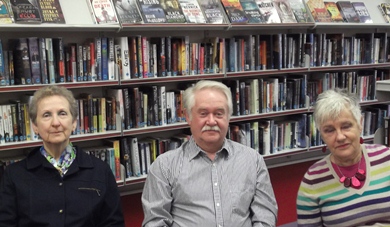
Six Degrees of Top Notch Separation
The latest titles from the Top Notch Thriller imprint of Ostara Publishing (in which I declare an editorial interest) are both by the legendary British writer Duncan Kyle.
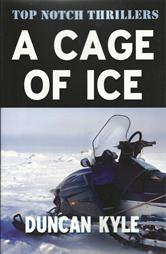 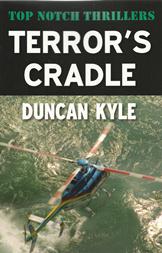
Now I am aware that in my enthusiasm I am often guilty of over-using the word ‘legendary’ but the story behind the publication of the first ‘Duncan Kyle’ thriller, A Cage of Ice, really is something of a legend in the publishing world.
In the 1960s British writers dominated the adventure-thriller scene, making huge sales worldwide and one publisher, Collins, seemed to have the golden touch with a stable of authors including Alistair Maclean, Hammond Innes, Desmond Bagley and (South African) Geoffrey Jenkins. They were to consolidate their success in the early 1970s with the acquisition of Jack Higgins, Brain Callison and, with a famous piece of serendipity, Duncan Kyle.
Under his real name, journalist John Broxholme had written a historical novel in a week for a bet with a Fleet Street colleague! When he decided to give fiction writing a full-time go, he opted for the thriller and a pen-name which sounded Scottish – as all his favourite thriller writers (Maclean, Innes, Buchan) had Scottish surnames! He also decided to take his manuscript ‘to the top’ and submit it to Collins, which is where – in the In Tray of an unknown editor – it sat and might have remained were it not for the sleep-walking habits of the boss of the company.
In those days, Sir Billy Collins had a flat above the office in London and one night, unable to sleep, he mooched downstairs into the editorial offices looking for something to read. He found the manuscript of A Cage of Ice by the unknown Kyle, took it back to bed with him, read it, and in the morning made the author an offer he could not afford to refuse!
A succession of bestsellers followed in rapid succession and by 1976, Kyle was Chairman of the Crime Writers Association and his name was mentioned by booksellers in the same breath as Alistair Maclean and Desmond Bagley, who became a firm friend.
Famed for the research he did on his exotic settings (Greenland, the Arctic, Borneo, Australia), Kyle travelled widely and for his fourth thriller Terror’s Cradle in 1975, this included a trip to Sweden where he met and became a lifelong friend of Swedish book collector, thriller fan and reviewer, Iwan Morelius.
Eagle-eyed readers will note a rather shady Swedish character called Morelius in Terror’s Cradle, and it was Iwan Morelius – now retired and living in Spain – who provided several photographs of Duncan Kyle ‘on location’ as it were, for the website www.ostarapublishing.co.uk
A long-time reader of this esteemed column, Iwan and his wife Margareta are the authors of Meeting With Authors, now quite a rare volume which I believe is only available in Sweden.
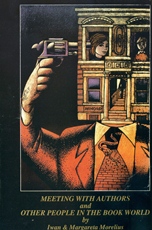
The book recounts his views on and meetings with writers over three decades, from Isaac Asimov to Dennis Wheatley and from his private collection he has kindly supplied this photograph from 1982 of his first meeting with this year’s Diamond Dagger winner, Frederick Forsyth.

To mark the reissue of the Duncan Kyle titles, Top Notch Thrillers are offering free copies of both to anyone who can name the book ‘Duncan Kyle’ wrote in a week for a bet which was published in 1967 and was to be the only novel to appear under his real name of J. F. Broxholme. Entries via email to shotscomp@yahoo.co.uk and put DUNCAN KYLE in the subject line.
Surfer Dame
This column has already championed Dame Agatha Christie’s right to be recognised as one of the pioneers of surfing, though as the information appeared in this column, few probably believed it. Proof, if proof is needed, now comes in the form of a most excellent compendium of letters and photographs culled from Agatha’s year-long ‘British Empire Expedition’ of 1922, superbly edited by her grandson Mathew Pritchard and published by HarperCollins.
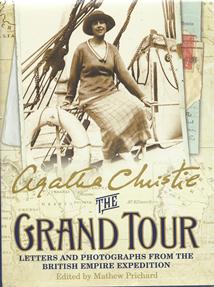
The Grand Tour is a record, mostly in photographs and weekly letters home to her mother, of the year-long voyage around the British Empire (i.e. the world) with her first husband, as part of a trade mission promoting the forthcoming British Empire Exhibition.
Clever readers will recognise locations and characters (among her fellow travellers) which later appear in her fiction. Surfing aficionados will appreciate the evidence of Dame Agatha taking to the sport like a ….well, I was going to say a duck to water, but I don’t know if ducks surf. However, Agatha was clearly keen, even though she found “plank swimming” difficult on her first attempts in South Africa. By the time the tour reached Honolulu, she had graduated up to full size surf boards and could clearly handle a boost, barrel, cutback, drop and tube with the best of them.
Shameless Plug

To be honest, I cannot quite remember why I continue to shamelessly promote each new novel by that Irish pixie Ken Bruen, when he never invites me – despite tempting promises – to any of the red carpet premieres of the many films made from his novels; events, I am assured, where champagne and Guinness Foreign Export flow in equal torrents, usually into the same glass.
However, because I never hold a grudge against anyone – publishers, agents, accountants, tax inspectors, politicians and Scandinavians naturally excepted – Ken’s new book, featuring his series hero Jack Taylor is Headstone and is out now, published by Transworld Ireland.
On the London social scene, it has been a quiet month at least for me. I was sadly unable to attend a launch party for the charming Julia Crouch and her new novel from Headline Every Vow Your Break, held at the capital’s go-to party venue for publishers, Goldsboro Books in Cecil Court.
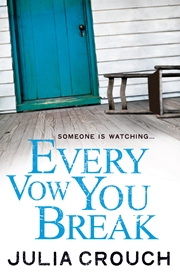
I was, however, able to pay my respects to that distinguished emporium at the party thrown by Faber for their American author Chris Pavone to celebrate his new novel The Expats.
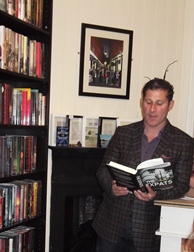
Due to the thronging crowds I was unable to have words with Mr Pavone which was a pity as I was keen to ask him about his experiences as an ‘ex-pat’ in Europe, which clearly inspired his novel, from which he read an extract.
Getting authors to read from their own work is something, I have noticed, that publisher Faber seems quite keen on, although in my experience crime writers are wittier and much more interesting when speaking “off script” – especially if it is a script they have written.
Honey at Ten-to-Three
I am not usually a betting man, but I am willing to wager that Sidney Chambers and the Shadow of Death, to give it its full title, will be a number one bestseller in Heffers Bookshop in Cambridge this summer.
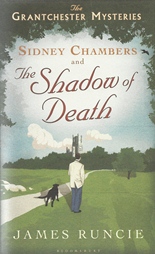
Written by James Runcie, son of the former Archbishop of Canterbury, and published by Bloomsbury, The Shadow of Death is the first instalment of ‘The Grantchester Mysteries’ which feature (in true Father Brown mode) amateur detective Canon Sydney Chambers, the vicar of Grantchester.
This first volume of interlinked stories takes up to 1954 but the complete series of six books is intended to cover the period from the Coronation of Queen Elizabeth in 1952 to the (first) wedding of Prince Charles in 1981, shortly after which the famous Old Vicarage at Grantchester was bought by the internationally best-selling author Jeffrey Archer.
Helping Hand
I always try and make myself available when as fellow writer is in need of counsel, guidance or advice and so was delighted to help that revered, if curmudgeonly, thriller writer John Lawton when he contacted me from his secret retreat in the Peak District in an area sometimes called the Bora Bora of Derbyshire.
John had discovered that a ‘Kindle’ edition of my old friend, the late Harry Keating’s dystopian masterpiece A Long Walk To Wimbledon had been released recently and wanted my opinion as to whether he should avail himself of a copy.
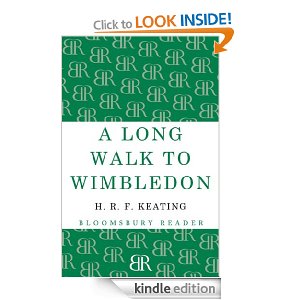
I replied to John with alacrity, urging him to read Long Walk for its atmospheric treatment of a ruined London after society has collapsed not so much with a whimper as a vicious snarl. I could do no other, for this was a book which I know was highly regarded by the critic Julian Symons and had been personally recommended to me by P. D. James. And so I wholeheartedly recommend the book to John, quite forgetting to ask him what on Earth a ‘Kindle’ was.
|
|
A Rynox Mystery Revealed
I am indebted to that splendid website Tipping My Fedora - a positive haven of intelligence and interest for the weary interweb traveller – for bringing to my attention a short (44 minute) film (a “quickie” as I believe they were known in some circles) from 1932 called Rynox.

The film, which can be seen free, in its entirety, on YouTube these days is notable not for being a classic thriller (it isn’t), or for having outstanding production values (it was made very cheaply) or showing amazing acting skills
(some performances are so wooden they creak), but it is interesting on several counts.
To begin with, it was the first (of several) film versions of a famous crime novel, The Rynox Mystery by Philip MacDonald, and made within two years of the book’s publication, and frankly, anything to do with Philip MacDonald is usually interesting.
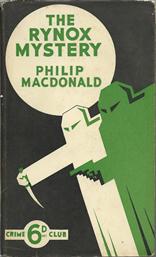
When Collins started their famous Crime Club imprint in 1930, the very first crime story they published was The Noose by Philip MacDonald (and not, as is often assumed an Agatha Christie), who had already established himself as a ‘name’ in British crime writing, though his best work was to come in the 1930s.
He had a knack of turning the genre on its head and was not afraid to experiment (two of his novels concerned ‘serial killers’ fifty years before they became common currency in crime fiction) and indeed The Rynox Mystery starts with an Epilogue and ends with a Prologue!
When the ‘Golden Age’ of British crime writing is spoken of in hushed tones, MacDonald is rarely mentioned, which I find hard to understand for he was an innovator as well as an entertainer. I do not think he was ever asked to be a member of the Detection Club and was probably snubbed by the crime-writing establishment for deciding – at the height of his success – to defect (horror of horrors!) to ‘the movies’ and – even worse – America, where he wrote scripts for many films, including the Charlie Chan and Mr Moto series and worked with Hitchcock and John Huston. In later life he tried his hand at television drama, scripting episodes of Fantasy Island, The Virginian and Wagon Train.
So, take it from me, Philip MacDonald was an interesting author and Rynox is an interesting little film and not only because it is the film of an interesting book. I am indebted to Tipping My Fedora for pointing out that Rynox was one of the first examples – and possibly the earliest surviving example – of the work of film director Michael Powell, which anyone with a decent knowledge of British cinema will agree is quite interesting.
The Compleat Crimereader
(with apologies to Isaak Walton)
I have long fancied the idea – indeed am simply waiting for the commission – to compile the essential library for the crime fiction fan who wishes to be truly well-read. Now this would not be a list of my favourite mysteries, or even necessarily what I would consider the best thrillers ever written. Rather it would be a library of crime fiction with which anyone wishing to really appreciate the genre – or pontificate on it! – ought to be familiar.
So my Compleat Crimereader will be a guide to essentials rather than one of those interminable “best of” or “Top 100” lists and I have been spurred into making a start on this project (which I will not be pursuing thematically or chronologically) by news that Arcturus Publishing have just reissued the glorious Trial and Error, written by the brilliant Anthony Berkeley in 1937.
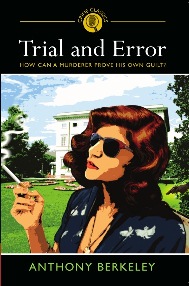
This has always been one of my favourite English mysteries from the so-called ‘Golden Age’ mainly because it does not take itself too seriously - it is dedicated to P.G. Wodehouse, which ought to be a clue for a start. It exploits a particular piece of English law (perhaps mis-interpreted) and the class system and morals of the day, which do make it a ‘period piece’ but it is an intriguing one, as was just about everything Berkeley wrote and this will not be the only one of his titles in my Compleat Crimereader library.
In a nutshell, Trial and Error concerns the mild-mannered Mr Lawrence Todhunter who, on learning he has only a few months to live, decides to do something useful for society by ridding it of a particularly obnoxious blackmailer. The nominated victim is duly murdered and Mr Todhunter goes on a long leisurely cruise to see out the rest of his days. He is half way around the world when he learns that someone has been arrested and convicted of the murder he has committed and so hurries back to England to confess his crime and prevent a miscarriage of justice. The only trouble is the police do not believe him and so he has to resort to taking out a private prosecution for murder against himself!
Now if you can resist this book, even after such a ham-fisted plot summary, then in my not-so-humble opinion, you’ve fallen at the first hurdle and will never be a Compleat Crimereader.
A Cunning Canning
And speaking of Arcturus Publishing, they are also to be congratulated on their forthcoming reissue of Victor Canning’s 1967 thriller The Python Project.
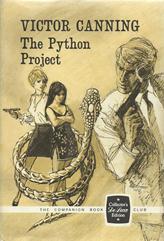
I have mentioned before that I had a fondness for Canning’s ‘Rex Carver’ books (there were only four of them, published between 1965 and 1969) because not only did they reflect the good and the bad of the ‘Swinging Sixties’ but they were examples of that then rarity, the British private eye story.
Now I admit that Rex Carver was no Marlowe, Spade, Archer, Hammer or McGee, but dammit all, he was British.
I am delighted that some of Canning’s thrillers are coming back into print, which is due in no small part to his literary heir and executor, the actor Charles Collingwood, who is better known as Brian Aldridge, the resident evil genius of Ambridge in The Archers.
I also hear, though have not had it confirmed, that reissues are planned of the thrillers of Helen MacInnes and in particular one of my favourites Assignment in Brittany, first published in 1942 when the plotline could have been taken from that week’s newspaper headlines (had the newspapers been allowed to report on spies being parachuted into enemy-occupied territory).
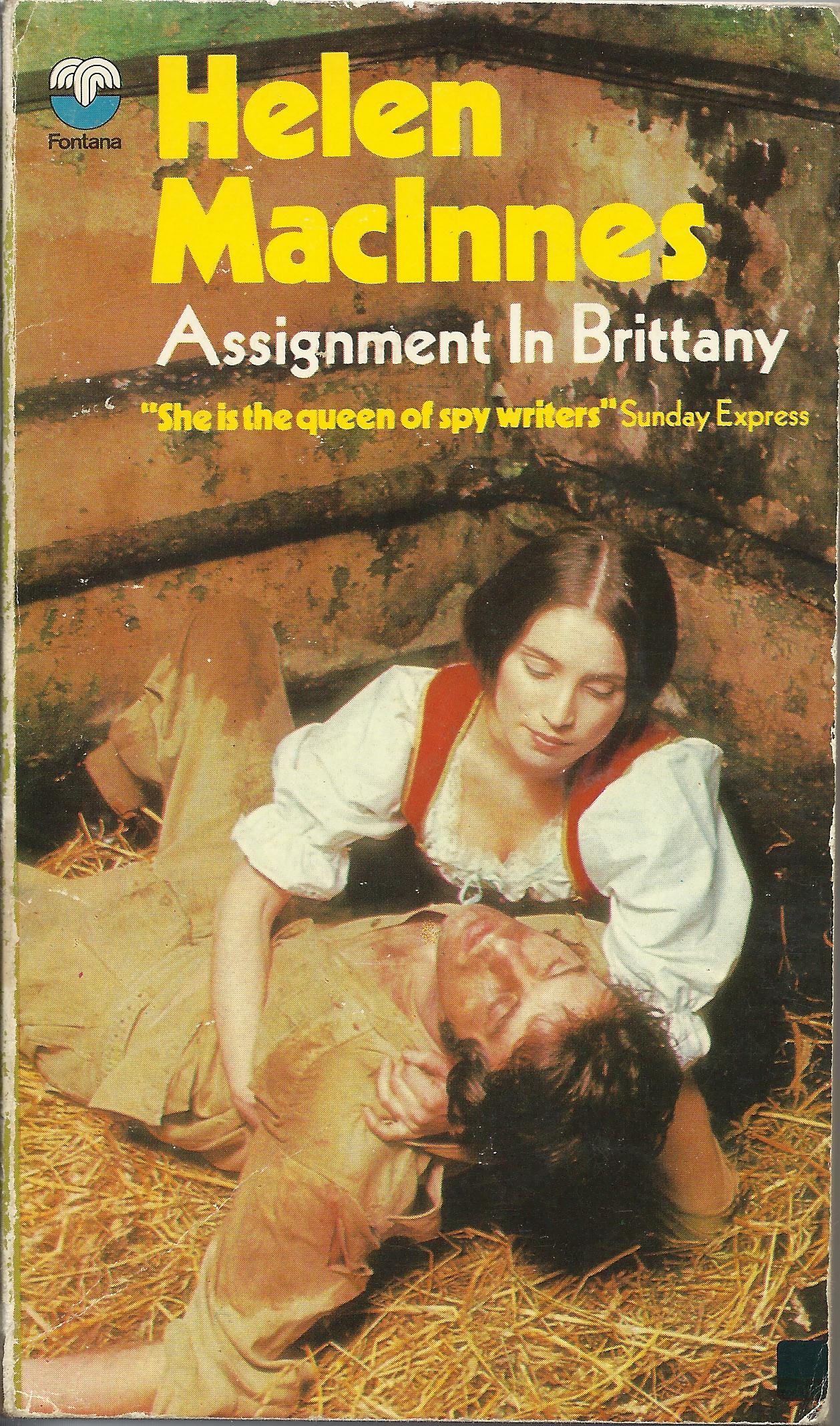 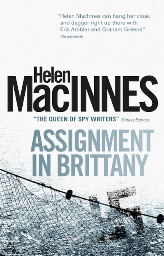
Jack’s Back
I am delighted that those fabulous Faber folk are reviving the debut novel of my old friend and fellow boulevardier, the late Michael Dibdin, firstly as an eBook but later in the year, as a proper book.
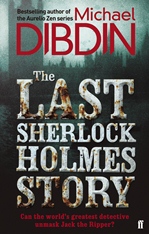
The Last Sherlock Holmes Story was first published in 1978, a full ten years before Michael created his famed Italian detective Aurelio Zen. Without giving too much away, I’ll just say that the book involves Sherlock Holmes, Dr Watson and Jack the Ripper and is very clever, very good and very cheeky – if you are a dedicated Sherlockian or a Baker Street Irregular.
News of the reissue reached me just as I was settling down to read the latest Alex Scarrow thriller from Orion, The Candle Man, which although published on the centenary of the sinking of the Titanic and having an image of the doomed ship on the cover, is really another take on the Jack the Ripper story – and a jolly exciting one too.
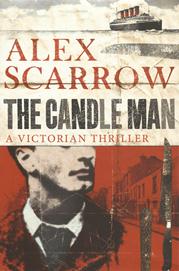
Alex Scarrow is one of the most imaginative, and under-rated, thriller writers we have in this country and he uses the Titanic disaster as punctuation marks for his own exposition of the Ripper murders in Whitechapel in 1888. Spookily enough, though, there was a ‘Mary Kelly’ among the 3rd Class Titanic passengers who survived, though she was an Irish lady born in 1890 - and thus unlikely to have been murdered in Miller’s Court in November 1888. In fact she died in America in 1950.
As soon as the cast of characters starts to be revealed, anyone familiar with the Ripper legend will have an inkling where the plot is going, but Scarrow delivers enough twists and turns to keep the pages turning and pulls off that rare trick of (almost) persuading the reader to cheer for one of the bad guys.
One thing, however, did disconcert me slightly. On two occasions, characters refer to going to or seeing a “launderette” which seems anachronistic for 1888 even in such an advanced city as London. If memory serves, respectable folk would send their blood-stained shirts out to steam laundries while the working poor would use communal laundries in public baths or wash-houses and do it themselves. I had always assumed that the launderette was invented in the 1950s by the beautiful Daniel Day-Lewis, though I may be getting confused.
Castles in the Library
I was positively inundated with an email following my casual remarks last time on good books set in Burma during WWII and have succumbed to entreaties to lift the dust sheet on another corner of the library here at Ripster Hall, this time on the section known as “Castles in World War II”.
Now this may seem a slightly esoteric sub-division of fiction and I admit that the genre is not large – in fact I have only three novels listed in this category but they are all jolly good, exciting reads and all, in very different ways, very well written.
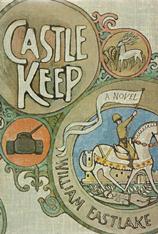
American William Eastlake’s 1965 novel Castle Keep should require no introduction, but sadly probably does. It is a wonderfully surreal, often very funny, anti-war novel up there with Catch-22 and like Joseph Heller’s classic, the setting may be the Second World War but the chords it struck were with the Vietnam generation.
Ostensibly the plot involves a small unit of American soldiers caught up in the German breakthrough in the Ardennes (the ‘Battle of the Bulge’) in December 1944 – where Eastlake was wounded on active service – and find themselves defending a medieval castle stuffed with antiquities and art treasures in a fight to their death and the destruction of 700 years of history. Quite why this book and Sidney Pollack’s 1969 film version (with the splendidly mad Burt Lancaster) are not better known, is a mystery.
Also set in an isolated, snowbound castle in the winter of 1944, but this time in northern Italy, Ian Breckon’s debut novel Knight of Swords was published by the innovative Old Street Publishing in 2009.
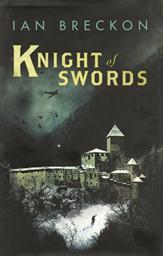
Although it escaped me on publication, I purchased a copy as soon as I heard of it and was mightily impressed. This is a hauntingly atmospheric tale of an isolated aristocratic family who (apparently) have isolated themselves from the world outside; a world ravaged by the activities of partisans, Communists, Fascist units, occupying German forces and invading Allied ones even though the war is clearly coming to an end.
Into the castle stumbles a wounded fugitive from the conflict outside only to find that the power games played within its walls are just as dangerous as the war going on outside.
For a really spooky castle-in-WWII story, however, look no further than F. Paul Wilson’s 1981 spine-tingler The Keep, set in a Gothic castle which could have featured in the Hammer Horror Book of Stock Settings, in Romania in 1941.
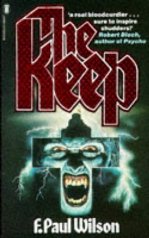
Something is scaring the garrison of soldiers there; scaring and occasionally decapitating them! The garrison, being units of the SS, are more used to doing the scaring, and discover that they have unleashed a supernatural force which has been contained in the castle for centuries – and for very good reasons. Yes, this is a full-on horror story from an author who is an acknowledged American master of the genre – and not a bad hand at science fiction either.
Although The Keep was an international bestseller, the film version, made in 1983, is rarely mentioned and even more rarely seen these days, which is odd as it has in its cast some Hollywood stalwarts – Scott Glenn, Jurgen Prochnow, Gabriel Byrne and Sir Ian “Gandalf” McKellen – and an indisputably talented director in Michael Mann (Manhunter, Heat, Last of the Mohicans and, if you must, Miami Vice). Something may have put the evil eye on the production – perhaps the fact that location filming was done not in the doom-shrouded mountains of Romania but actually in the more friendly, sunnier and far less threatening uplands of Blaenau Ffestiniog in Wales and we all know that nothing really scary ever comes out of Wales – well, not since Dylan Thomas’ bar bill, that is.
A Welsh Apology
Now of course that isn’t entirely true, for in the new novel by Harry Bingham,
Talking To The Dead, there are plenty of scary crimes committed, a female police detective who can be pretty scary too and it’s all set in Cardiff.
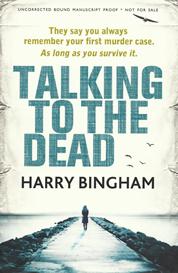
A new crime series set in Wales is surely to be welcomed – if only because Wales isn’t Scandinavia, and new-cop-on-the-block DC Fiona Griffiths is a fascinating character even if troubled (aren’t all fictional detectives?) and at times distinctly odd.
If I have a bone to pick with Talking To The Dead it is that the South Wales police (or ‘Heddlu’), when confronted with a vicious double murder in seedy Butetown, call the investigation Operation Lohan because (and I quote) ‘there’s an actress called Lindsay Lohan who’s a redhead and has had drink and drugs issues.’ Now I find this incredible as – and I thought it was common knowledge – police operational names are generated randomly by computer and the whole point is that they should bear absolutely no connection to the people and places involved in the investigation. Consequently, the case of the murder of a young redhead with a record of drug abuse would not be called ‘Operation Lohan’ and indeed there is a police procedure for changing operational case names if there is the tiniest suggestion of a link to the subject matter of the investigation. (In London, for instance, Operation Trident deals with gun crime, not trident crime.)
However, my experience is of English police forces, not Welsh. It is possible they do things differently there. It is, after all, a foreign country.
Trending
I am reliably informed that the next ‘big thing’ in mystery fiction will be crime novels with Scandinavia settings!
Ridiculous as this sounds, there could be a sliver of truth in the rumour and as one who hates to be left behind in fashionable matters and likes to keep up with all the latest trends, I have decided to investigate this particular phenomenon and so read up on the subject.
 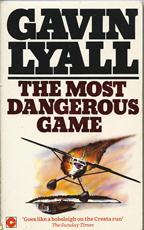
To my surprise, the first two examples I tried were quite brilliant, the one set in Norway (with lots of juicy descriptions of that country’s love of whale meat) and the other in Finland and I recommend both highly.
Toodles!
The Ripster.
|